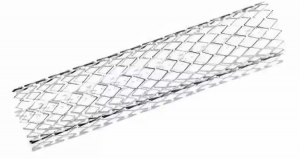A medical stent is a small tube-like device that is used to keep a blood vessel or other tubular structure open. There are several methods used in the processing of medical stents, the choice of processing method depends on factors such as the material used, the desired stent shape and size, and the manufacturing capabilities of the manufacturer.
including:
Laser Cutting: Laser cutting is a popular method used to produce stents. A laser is used to precisely cut a metal tube into the desired shape and size.
Chemical Etching: In this method, a metal tube is coated with a protective layer and a pattern is etched into the surface using chemicals. The protective layer is then removed to reveal the stent.
Electroforming: Electroforming involves the deposition of metal onto a mandrel using an electric current. The mandrel is then dissolved, leaving behind the stent.In This Process, A Metal Layer Is Built Up On A Mandrel Using Electroplating Techniques. Once The Desired Thickness Is Reached, The Mandrel Is Removed, Leaving Behind The Medical Stents. This Method Offers High Precision And The Ability To Create Small Features.
Extrusion: Extrusion Involves The Use Of A Heated, Viscous Polymer That Is Forced Through A Die To Form The Desired Stent Shape. This Process Is Commonly Used For The Production Of Polymer Stents.
Injection Molding: Injection molding involves melting a polymer material and injecting it into a mold. The mold is then cooled, and the stent is removed.
Photochemical Machining: This Process Involves The Use Of Photoresist And Etchant To Selectively Remove Material From A Metal Sheet, Leaving Behind The Desired Stent Pattern. This Process Offers High Precision And Allows For The Creation Of Complex Geometries.
3D Printing: 3D printing is an emerging method used in the processing of medical stents. A 3D printer is used to create a stent layer by layer using a polymer or metal material.



